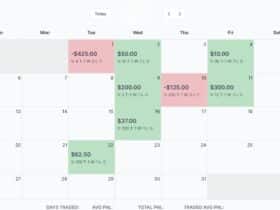What if the most valuable thing you pass on is certainty? Legacies are built with clear decisions made long before they are needed. From protecting income to funding children’s futures, planning decides whether loved ones inherit stability or stress.
Utilise practical coverage, straightforward steps, and clear documentation. Turn intentions into actions that your family can follow. Start now, because preparation creates confidence, and confidence becomes the foundation that outlives you.
15 Step Guide for Building a Financial Legacy
A strong legacy is built with clear intentions and consistent action. Use this roadmap to protect income, organise information, grow skills, and prepare your loved ones to lead with confidence. Work through each step at your own pace and revisit it annually, allowing your plan to evolve as life changes.
1. Define What “Legacy” Really Means For Your Family
Begin by writing a simple legacy statement. List the outcomes you want for your loved ones over the next 10, 20, and 30 years. Include money goals, education priorities, health standards, and values you want to preserve.
This becomes your compass. When choices feel complicated, return to this statement and ask whether each decision moves your family toward those outcomes.
2. Safeguard Core Income with Life Insurance
Income is the engine that runs every household plan. Protect it first. A comprehensive life insurance policy ensures that dependents can cover living expenses, repay debts, and maintain educational plans if the primary earner passes away.
Choose a coverage amount that replaces income for 10 to 15 years, includes outstanding loans, and accounts for big goals such as college or a spouse’s retirement funding. Revisit coverage after milestones, such as a promotion, the birth of a new child, or a home purchase.
3. Create a Family Financial Playbook That Everyone Can Use
A legacy fails when no one can find the information. Build a one-page “financial map” that lists policy numbers, bank and investment accounts, nominees, key contacts, passwords via a password manager, and where originals are stored.
Add a plain-English summary of what to do in the first 30, 60, and 90 days after a crisis. Share read-only access with two trusted family members and your executor.
4. Build Two Funds: Emergency and Opportunity
Most families set up an emergency fund and stop there. Add an “opportunity fund” too. The emergency fund covers six months of expenses, providing peace of mind in the event of job loss, illness, or unexpected repairs.
The opportunity fund covers the costs of upskilling, relocation, or a down payment, helping you move ahead. Label accounts so money remains purpose-driven and harder to spend casually.
5. Prioritise Pure Protection That Scales With Your Needs
Coverage should be simple, affordable, and big enough to matter in a crisis. That is why a comprehensive term insurance works so well. It is a pure protection plan that replaces income risk at a relatively low premium.
Buy early to lock in lower costs, match the policy term to your longest liability, and add riders only when they align with your risk profile, such as accidental death or critical illness coverage.
6. Title, Nominate, and Document Your Assets Correctly
Ownership clarity prevents confusion, delays, and disputes. Ensure title deeds, investment folios, and bank accounts list the right owners and nominees. Where appropriate, use joint holding with survivorship or a simple trust for minors or individuals with special needs.
Keep an updated will that names an executor and guardian, and store it with instructions in your financial playbook. Review beneficiary designations annually.
7. Invest in Education and Skills That Compound
Money can be lost or misused. Skills compound across generations. Fund ongoing learning for adults and children, including financial literacy, negotiation, digital safety, and wellness.
Encourage certifications that raise lifetime earnings. Create a small annual “learning grant” in the family budget for books, courses, and workshops. Education multiplies the impact of every rupee you leave behind.
8. Protect Health to Protect Wealth
Medical shocks can unravel the healthiest balance sheet. Maintain comprehensive health cover, schedule annual checkups, and promote daily routines that reduce risk. Track family medical histories and store test results in your shared folder.
A healthy household works, earns, and learns better, which supports the long-term continuity of your legacy plan.
9. Secure Your Digital Life and Critical Records
Your family’s assets now live partly online. Enable multifactor authentication on email, banking, and investment apps. Maintain an inventory of digital assets, including wallets, subscriptions, and cloud storage.
Store copies of IDs, policies, and wills in encrypted cloud folders with access instructions. Run a half-yearly “doc check” to verify that files open and links work.
10. Practice Generosity With Guardrails
Philanthropy signals your values and teaches stewardship. Create a small, recurring giving budget and decide together which causes to support. If you own a family business, formalise modest CSR efforts with clear goals and reviews.
Generosity should not threaten core security. Set a percentage and stick to it, so giving is consistent and sustainable.
11. Prepare Heirs With Roles, Not Surprises
Surprise inheritances often overwhelm people. Start with small, supervised responsibilities. Invite adult children to attend annual reviews. Let them manage a portion of the family portfolio in a sandbox account.
Rotate responsibilities like insurance renewals, property taxes, and auditing the emergency kit. Confidence grows with practice, not with a single handover.
12. Run a Yearly Legacy Review And Fire Drill
Pick one month each year for a full review. Check sums insured, nominees, will updates, cash flow, and hospital networks. Then run a “fire drill.” Pretend the primary decision-maker is unavailable for a week.
Can the family pay bills, access cash, and file a claim? The gaps you discover are your action list for the next quarter.
13. Simplify Your Investments to Reduce Future Friction
Complexity is the enemy of continuity. Fewer accounts and cleaner products make management easier. Prefer low-cost, diversified instruments that need minimal oversight.
Avoid overlapping funds, duplicate insurance, and flavour-of-the-month bets. Simplicity builds predictability, which is exactly what your family will need during transitions.
14. Protect Property and Legacy Items Thoughtfully
Homes, heirlooms, and keepsakes carry emotional weight. Document what exists, its condition, and who should receive it. For property, verify taxes, encumbrances, and society dues are up to date.
Photograph rooms and valuables for insurance and for easier division later. When the meaning is clear, distribution becomes kinder and faster.
15. Keep Communication Honest, Age-appropriate, and Regular
Silence creates anxiety and conflict. Schedule short, quarterly conversations about money health, cover levels, and ongoing goals. Share what you can at an age-appropriate depth. Invite questions and record decisions.
Clear communication today prevents speculation tomorrow and preserves relationships, which are the heart of any legacy.
Legacies are built in quiet, consistent steps. Write your family’s outcomes, protect income with the right cover, organise documents, and rehearse what to do in an emergency. Clean up titles, simplify investments, and teach the next generation to manage and grow what you have started.
Choose one action this week and complete it. Then choose another next week. Momentum is your ally, and your family’s future will thank you for it.
Related: Everything You Need to Know About Forex Trading in India
Disclaimer: The information provided in this article is solely the author’s opinion and not investment advice – it is provided for educational purposes only. By using this, you agree that the information does not constitute any investment or financial instructions. Do conduct your own research and reach out to financial advisors before making any investment decisions.

















Active Noon Media is the largest local to national digital media website that represents the voice of the entire nation.